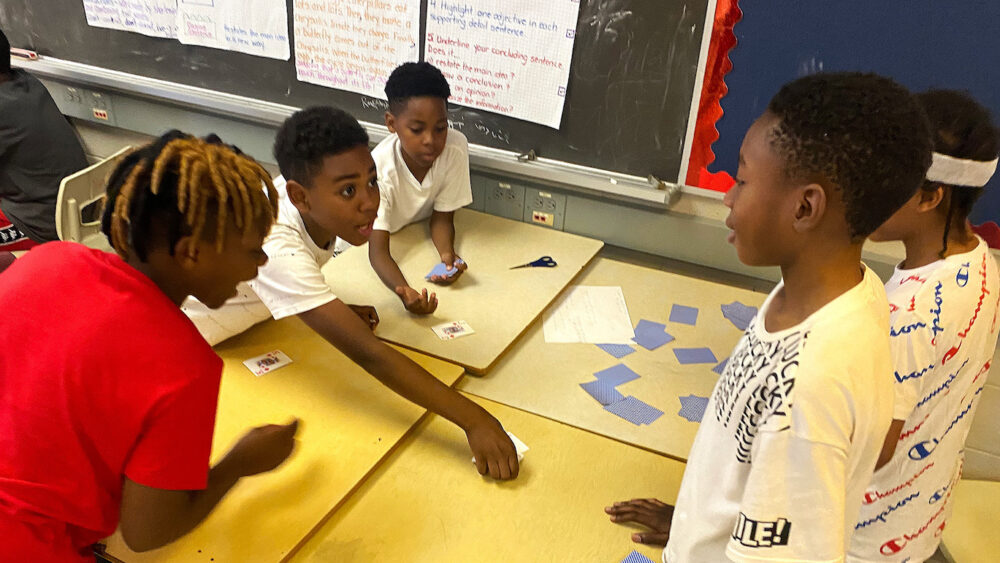
Robertson Program brings playful math to YAAACE 2023 Summer Camp
The Robertson Program held three playful math sessions with children in the Youth Association for Academics, Athletics, and Character Education’s (YAAACE) Summer 2023 Camp.

The Robertson Program held three playful math sessions with children in the Youth Association for Academics, Athletics, and Character Education’s (YAAACE) Summer 2023 Camp.

Number lines make explicit and build upon pre-existing spatial-numeric intuitions, support children’s growing understanding of ratio, proportion and scaling, and help students to construct and internalize a “mental number line” that continues to develop in complexity from kindergarten through university mathematics and beyond.

Lesson ideas for investigating insects, exploring their relationship with the local environment, and understanding their influence on a global scale. Different lesson ideas for primary and junior teachers.

Grade 4/5 Teacher Zoe Donoahue shares the Daily Math Discussion she’s developed for junior grades. Her students use the number of days in school to explore factors, prime and composite numbers, fractions, division, multiplication, place value — and more!

Self-directed modules intended to support primary- and junior-grade teachers seeking to solidify or extend their mathematical knowledge for teaching. Concepts and procedures are based on Ontario’s elementary math curriculum. Each module concludes with an interactive problem-solving slide deck to practice relevant concepts in different contexts.

Fraction Ball converts a traditional basketball court, putting focus on the relationship between fractions and their equivalent decimals. “Fraction Ball can be painted pretty much anywhere or even drawn with chalk,” says University of California-Irvine Assistant Professor Dr. Andres Bustamante.

The Robertson Program held three playful math sessions with children in the Youth Association for Academics, Athletics, and Character Education’s (YAAACE) Summer 2023 Camp.

Number lines make explicit and build upon pre-existing spatial-numeric intuitions, support children’s growing understanding of ratio, proportion and scaling, and help students to construct and internalize a “mental number line” that continues to develop in complexity from kindergarten through university mathematics and beyond.

Lesson ideas for investigating insects, exploring their relationship with the local environment, and understanding their influence on a global scale. Different lesson ideas for primary and junior teachers.

Grade 4/5 Teacher Zoe Donoahue shares the Daily Math Discussion she’s developed for junior grades. Her students use the number of days in school to explore factors, prime and composite numbers, fractions, division, multiplication, place value — and more!

Self-directed modules intended to support primary- and junior-grade teachers seeking to solidify or extend their mathematical knowledge for teaching. Concepts and procedures are based on Ontario’s elementary math curriculum. Each module concludes with an interactive problem-solving slide deck to practice relevant concepts in different contexts.

Fraction Ball converts a traditional basketball court, putting focus on the relationship between fractions and their equivalent decimals. “Fraction Ball can be painted pretty much anywhere or even drawn with chalk,” says University of California-Irvine Assistant Professor Dr. Andres Bustamante.
